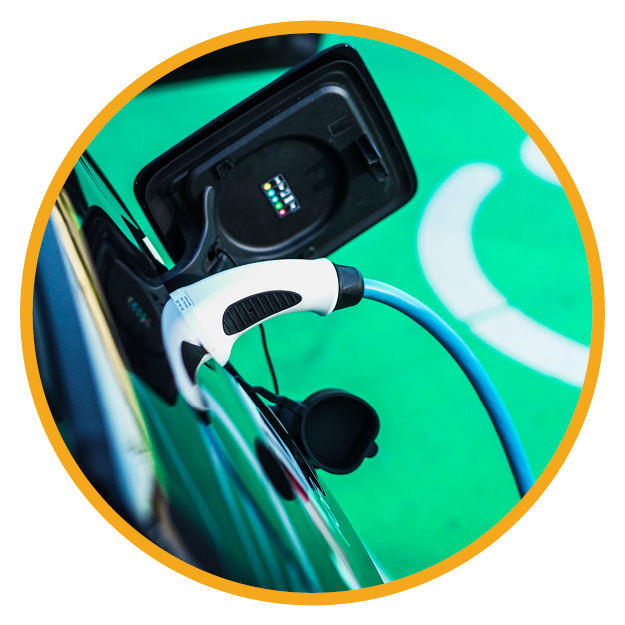If you’re a member of an owners corporation or body corporate and considering upgrading your property with strata electric vehicle charging (EV) facilities, you’re part of a growing trend.
The popularity of electric vehicles (EVs) is rising in Australia, fuelled by their environmental benefits, cutting-edge technology and increasing affordability. Installing owners corporation or body corporate electric vehicle charging stations on your common property can not only help address the demand and needs of the community but it may add value to the property and promote sustainability.
However, navigating the installation process can be complex, requiring careful planning, coordination of EV charging by-laws, and adherence to the electric vehicle laws by state regulations. While most new buildings are designed with EV charging stations, older buildings face the challenge of identifying ways to appropriately integrate these facilities into existing common areas or lot spaces.
Considering adding EV charging stations to your property? When embarking on the installation process for these types of facilities on common property, there are several critical factors that your strata, owners corporation, or body corporate property should consider and discuss:

Evaluating both short-term and long-term demand levels.

Engaging with a qualified expert to help assess and assist with the installation.

Evaluate the building's infrastructure to determine if it is fit for installation or requires upgrades.

Identifying potential locations to install EV station(s).

Deciding how expenses (like electricity) would be distributed and paid amongst residents.

Estimating the pre-installation, installation, and ongoing operational costs.

Determining where the consistent maintenance and repair costs, including capital replacement responsibilities will sit.

Establishing by-laws or rules for daily operation and usage of the facility.
The Strata Community Association (SCA) has provided the following checklist of items to consider when navigating the above issues:

Assess potential switchboards, distribution boards, and cabling equipment installation and modifications.

Evaluate the need for upgrades to three -phase power.

Consider additional infrastructure such as bollards, Wi-Fi, and software for load management.

Understand the voting resolutions needed to make changes to common property as per state laws.

Determine charges, payment options for common areas, and approved devices for individual spaces.

Establish appropriate by-laws for regulating use and resolutions for changes to common property.
The Electric Vehicle Council, a reputable advisor and nationwide representative for Australia’s EV sector, provides a comprehensive range of resources and guidelines. These materials are easily accessible and designed to educate property owners about their options and the rules for installing EV chargers in private and shared properties.
Once you’re clear on what to consider, the installation process is the next step. When integrating EV facilities into your building, the recommend the following five steps can provide a baseline on what the installation process should look like:
For owners corporations and body corporate, installing strata EV charging stations may seem like a costly endeavour. To get maximum value from this investment, it is important to first assess the short, medium, and long-term demand through a survey.
This method helps committees gauge the likely need for these facilities in their building. It helps provide a cost-benefit assessment in assisting the committee to determine the most appropriate solution or option for their property.
Engaging a strata manager could simplify and streamline the process for the committee. Leveraging their expertise, tools, and skills could support committees in efficiently distributing surveys, collecting responses, and analysing results within an owner corporation or body corporate property.

Once the committee decides that the demand or interest justifies the installation, the property should assess the suitability of integrating various EV charging options into the existing building infrastructure.
Engaging with a qualified energy auditor to conduct a building energy assessment will help your committee understand the consequences of EV charging and assist in preparation for the additional electrical load.
Key areas that are evaluated in this step include:
Providors who can assist with these audits can be found under the NABERS Accredited Assessors directory here.

When installing EV charging facilities on an owners corporation or body corporate property several approaches can be considered, such as:
This model allows individual users to install charging points based on their needs. It’s a potential option for small numbers of owners requiring a charging infrastructure. However, its lack of scalability doesn’t offer a comprehensive, long-term solution for the whole property.
The shared model involves installing basic charging infrastructure in common areas like visitor or guest parking. Operational and administrative procedures for billing and sharing time and space should be carefully considered and enforced through a by-law. This model is typically suited for properties with few EV owners in shared parking areas, like an underground garage in a large complex. However, it lacks scalability and doesn’t offer a comprehensive, long-term solution for the entire property.
This comprehensive approach is best suited for buildings with high EV charging needs within the community and involves installing and upgrading the building’s electrical and charging infrastructure for all residents.
We understand that finding the ideal energy solution for your property can be a challenging task. With a wealth of options available, it might feel overwhelming to decide which ones are most suitable for your building.
Engaging a knowledgeable consultant to conduct the energy assessment can help navigate this complex area. They can offer the committee guidance on best practices for implementing energy efficiency options. The consultant performs an in-depth analysis of a building’s energy usage and can offer invaluable insights and recommendations on the most effective installation method that suits a particular building.

Once the owners corporation or body corporate property has selected the preferred installation method, they will need to decide on a payment option.
Different financial alternatives are available for EV charging infrastructure. Implementing a payment process requires an agreement from the owners corporation or body corporate. The decision should be clearly stated in the EV charging by-law.
There are essentially three options available to consider:

By this stage, the committee should have a clearer sense of their recommended approach regarding the model, timing, cost recovery and billing options. To install EV charging equipment on shared property requires a general meeting approval to modify common property. For this change to pass, votes from committee members, the owners corporation, or the body corporate are primarily guided by the following state legislation:
NSW | Special resolution* |
QLD | |
VIC | |
NT | |
TAS |
* The Strata Schemes Management Amendment (Sustainability) Act 2021 No. 1 now categorises EV charging as ’sustainability infrastructure’. This means the threshold voting requirement for the special resolution to modify common property is reduced to ‘if less than 50% are against the resolution’, i.e., the motion will pass provided it doesn’t receive more than 50% of opposing votes based on unit entitlement.

Along with the meeting approval to install EV charging stations on common property, it’s important to establish appropriate by-laws or rules around their used and upkeep.
Owners corporations or body corporates should create, and enforce by-laws or building rules that promote fairness, prevent disputes, and establish clear responsibilities for maintainence.
The common property rights by-law could adequately address smaller-scale EV installations. However, a more detailed guideline may be needed if energy cost recovery is a concern.
A pre-existing strata EV charging by-law or building rule might need to be updated or removed.

The installation of EV charging infrastructure and equipment at the desired car spaces.

Approved infrastructure spending.

Cost recovery details.

Infrastructure operation and maintenance plan.

Usage and billing arrangements.

Outsourcing of any components as appropriate.

To help improve sustainability and lower emissions, the Australian federal government released a National Electrical Vehicle Strategy in 2023. This strategy guides future investment by state and territory in increase the adoption of electric vehicles in strata buildings.
Some state governments and local councils offer financial assistance to help increase the number of owners corporations and body corporate electric vehicle charging facilities. Additionally, the energy auditor should be able to assist properties towards suitable offset cost options for installing EV charging infrastructure.
Below is a summary of some government initiatives and grants that are available as of March 2024:
This NSW government launched a $10 million EV strata initiative in October 2023, co-funding up to $80,000 for EV charging strata upgrades in eligible apartment buildings, divided into two stages:
The grant will subsidise the feasibility assessment cost, with applicants contributing $2,000 ex-GST, and the government will cover the rest.
To be eligible the scheme must be:
The grant offers 80% co-funding (up to $80,000 per building) for eligible infrastructure costs and 50% (up to $1,200 per building) for some software costs for two years.
To be eligible, the scheme must:
Applications for the EV charging strata NSW grant are assessed in order of receipt. As of the publication date , due to high demand, new applications are on hold while current ones are processed. Review the government websites for updates.
On March 16, 2022, the Queensland Government announced the Zero Emission Vehicle Strategy 2022-2032 and the initial Zero Emission Vehicle Action Plan 2022-2024.
The strategy sets the target for 50% of new passenger vehicle sales to be zero emissions by 2030 and increasing to 100% by 2036. It also plans for all eligible government fleet vehicles and new TransLink-funded buses to have zero emissions by 2026 and 2025 respectively.
The action plan outlines key initiatives for increasing zero-emissions vehicle adoption, focusing on alternative fuels and emerging technologies. These are expected to result in reduced greenhouse gas emissions, improved urban air quality, better health outcomes, and more sustainable job opportunities.
Victoria’s plan for ZEV focuses on actions planned for this decade. It aims to remove any barriers to adopting ZEV technology and capitalise on opportunities emerging from this technology shift. The Victorian Government is running an education campaign to increase the adoption of ZEVs and is actively supporting the National Construction Code to facilitate this transition.
However, the current challenge is that many properties may lack the necessary infrastructure to install owners corporation EV charging facilities, including the appropriately rated cabling, switchboard and sub-station capacity. In response, the government is developing various resources to help guide owners corporations looking to install EV charging stations.
To encourage the shift to ZEV technology and help reduce the high costs associated with retrofitting EV charging support infrastructure in residential and other buildings, the following measures are proposed:
• A budget of $298,000 is allocated for a study on ‘EV-readiness’ in new buildings.
• Support changes to the National Construction Code to facilitate this transition.
• Developing and providing helpful resources such as the EV ready buildings guide to help guide owners corporations looking to install EV charging infrastructure.
Although there are no active residential EV grants for owners corporations in 2023, the Victorian government is planning to develop further incentives to help support, futureproof, promote, and reduce the costs of installing EV charging in apartment buildings. Furthermore, the government are also exploring strategies to optimise switchboard capacity and manage the cost of upgrades, with the potential of rooftop solar and storage batteries to manage peak demand and help lower the net cost of EV charging in existing residential buildings.
This initiative offers financial support for purchasing and installing body corporate electric vehicle charging facilities in residential properties. Under this scheme, property owners can receive up to $1,000, while businesses can get up to $2,500.
As of March 2024, the scheme will undergo a review and potential amendment within six to 12 months to align with the NT Government’s objectives.
Eligible applications are required to meet the grant’s terms and conditions and:
• Own an electric vehicle registered in the Northern Territory.
• A residential property owner.
• Is an owner of a residential property that meets the specified requirements.
For details on application and participation as a service provider, please follow the link to read more about the application process for this scheme.
The Tasmanian Government’s Energy Saver Loan Scheme has progressed significantly, with Brighte Capital now confirmed as the finance partner and program provider to help make energy more affordable and sustainable.
This program is part of a broader initiative to promote energy efficiency. It offers financial assistance to owners within eligible properties helping them to pay for the installation of energy-efficient strata EV charging infrastructure. These loans come with no establishment or account-keeping fees, although late repayment fees do apply. Loans can vary from $500 to $10,000, with terms from one to three years, requiring fortnightly or monthly repayments.
Energy Saver Loans must be used for purchasing and installing eligible energy-efficient products in Tasmanian properties, which include:
• The main place of residence.
• Residential properties leased to tenants.
• Properties for community organisations.
Please note:
• The program only funds AC chargers, with DC fast chargers excluded.
• Loans are limited to $10,000 per property and individual applicant and are only offered to recipients who can financially afford the repayments over the agreed term.
• A licensed electrician must do the installation, and any costs related to upgrading to three-phase power can be rolled into the loan.
• Eligible properties for charger installation include existing standalone residences or strata-titled properties.
• Apartment owners require approval from the body corporate to install an EV charger on the property.
• There is no income, house value or asset tests.
Other forms of government assistance may be available for those not eligible for an Energy Saver Loan, such as the No Interest Loan Scheme (NILS) for low-income Tasmanians.
Safety should always be a top priority when installing strata EV charging stations within owners corporation and body corporate properties, particularly around reducing the risk of fire hazards.
As more Australians switch to EVs, the National Construction Code (NCC) has mandated that new buildings be equipped for EV charging. However, it’s worth noting that battery fires possess distinct characteristics compared to those caused by liquid fuels.
In collaboration with EV FireSafe, the Australian Buildings Codes Board developed and issued an advisory note in 2023, providing recommendations to foster the safe installation and usage of EV chargers.

Currently, there are no ongoing fire safety compliance regulations for strata electric vehicle charging. However, service providers must follow specific national and regional laws when installing in owners corporation and body corporate buildings.
All electrical work should be carried out by licensed professionals operating within Australian standards and regulations. The setup should integrate safety features such as circuit protection devices and clear signage to limit risks and associated liabilities. Regular maintenance and inspections are essential to fulfil ongoing safety and compliance requirements.
For service providers, the AS/NZS3000:2018′ Wiring Rules’ details the national mandatory requirements around electric vehicle supply equipment (EVSE) installations. The legal requirements focus on selecting and setting up circuit breakers, residual current devices (RCDs), cable sizing, and safeguarding installations from mechanical damage.
In addition, the AS/NZS3000:2018′ Wiring Rules’ also offer informative sections that are not mandatory but should generally be observed unless there are valid reasons not to.
Furthermore, owners corporation and body corporate properties should take advice from the appointed energy auditor regarding these issues and disclose the proposed infrastructure solution to their insurer before undertaking any works to mitigate the risk of future insurance implications.
Beyond these national standards are further state-specific installation restrictions and mandatory guidelines known as Service and Installation Rules (SIRs). These electric vehicle laws by state serve as a guide for contractors, outlining the regulatory requirements for electrical installations within buildings.
Although these documents may be for service providers, they can be a valuable resource to help committees understand the strata EV charging installation options that comply with state laws and choose the suitable approach for their owners corporation or body corporate building.
You can freely access and downloadable the SIRs to learn more about the specific requirements for your state:
Installing strata electric vehicle charging infrastructure can be a game-changer. Modernising this aspect of your owners corporation or body corporate property can help enhance the building’s appeal, sustainability, and value.
If you think it’s time for your building to improve its sustainability, contact your strata manager and building manager to see what’s possible. They’ll likely be able to work with you to evaluate what is feasible and get the ball rolling on a greener future for your community.
In our commitment to bolster sustainability, we have forged strategic partnerships to help strata, owners corporation, and body corporate properties to adopt eco-friendly practices, increase building value, and potentially unlock savings.
Ask about our CommunityUtilities energy savings program or explore our various green initiatives through CommunityGreen and other related services. If you want to learn more about improving sustainability in strata settings, browse our article library here. To learn more about our services, click here for a free assessment.

Head office
Level 27, 66-68 Goulburn Street, Sydney, NSW 2000

Monday - Friday, 8:30 am - 5:00 pm